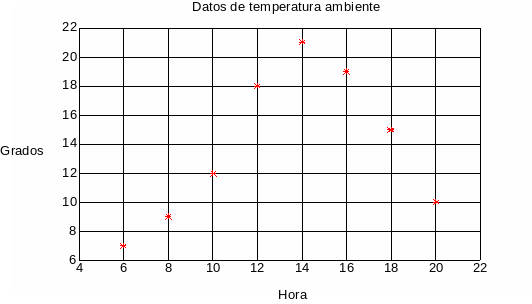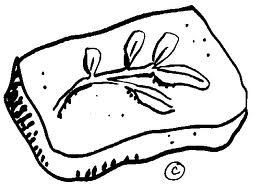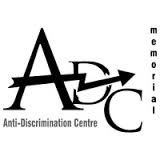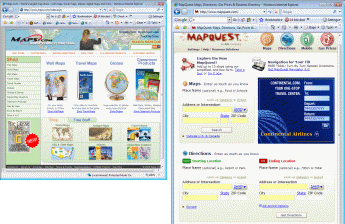TALENT SEARCH GRANTEELEVEL PERFORMANCE RESULTS 2013–14 | 9 TALENT
1 TALENTSTÆVNE 202122 TERNDRUP SVØMMECENTER 26 SEPTEMBER 20212 7052013 PROCESO GESTIÓN DEL TALENTO HUMANO FECHA DE
5 INDIANA ACADEMY OF SCIENCE TALENT SEARCH PERSONAL DATA
5to Talent Show 2012 i Programa Taller de Violin
AMCHAM TALENTS 2019 PRIJAVNICA PLAĆANJE PATRON ČLAN □ (PATRON
AMORES Y AVENTURAS DE GOETHE HOMBRE DE TALENTO MONUMENTAL
Discussion of Talent Search Program Grantee-Level Performance Results: 2013–2014 (MS Word)
TALENT
SEARCH GRANTEE-LEVEL PERFORMANCE RESULTS 2013–14
|
Talent Search Grantee-Level Performance Results: 2013–14
Introduction
The Talent Search (TS) program aims to improve the college enrollment rate for middle and high school students from disadvantaged backgrounds. The U.S. Department of Education’s annual Government Performance and Results Act (GPRA) report includes two indicators of TS program success and one measure of TS program efficiency. The 2013–14 reporting year was the third year of the 2011–16 funding cycle, and calculation rules for participant outcomes and program efficiency in 2013–14 were the same as those used in the previous reporting year.
Program Success Measures for Talent Search (TS) Projects
The two TS program success measures are postsecondary enrollment rates and financial aid application rates. These measures were calculated using the TS Annual Performance Report (APR), which was redesigned in the 2011–12 reporting year.
The postsecondary enrollment rate was calculated as the percentage of college-ready seniors who enrolled in postsecondary education by the fall term immediately following high school graduation, or by the next academic term if the institution deferred the participant’s enrollment. GPRA tables also present the types of institutions in which these college-ready participants enrolled.
The financial aid application rate was calculated as the percentage of high school seniors who completed the Free Application for Federal Student Aid (FAFSA) during the reporting year.
Selected Postsecondary Findings
Table 1 displays the number and percentage of participants who enrolled in postsecondary institutions and the number and percentage of participants who applied for financial aid. This table also displays the total number of participants served, the number of college-ready participants served, and the number of senior participants served. The data are presented at the program level and at the project level. The calculation methodology for Table 1 is discussed in the Appendix.
Postsecondary Education Enrollment
Program efficiency was measured as the gap (or difference) between the cost per active participant who experienced a successful persistence or completion outcome and the cost per active participant who received program services during the 2013–14 reporting year. In contrast to the program performance measures, which are based on cohorts of freshman students, program efficiency was measured among all participants served within the 2013–14 reporting year (i.e., new, continuing, and summer session participants). A reduction in the efficiency gap between reporting years may be interpreted as an improvement in program efficiency.
For 2013–14, the TS program-level postsecondary education enrollment rate was 79.7 percent of all college-ready participants. This was almost 1 percentage point lower than the 2012–13 program-level postsecondary education enrollment rate, which was 80.6 percent, and did not meet the Department’s 2013–14 program-level goal of 80.5 percent.
Of the 452 grantees funded in 2013–14, 45 experienced a decline of at least 10 percentage points in their postsecondary education enrollment rate between the 2012–13 and 2013–14 reporting years. For some of these grantees, there seems to have been an increase in the number of college-ready participants served and no change in the number of students enrolled in postsecondary education.
Applications for Financial Aid
For 2013–14, the TS financial aid application rate was 84.5 percent of all high school seniors. This rate was 0.7 percentage points higher than the 2012–13 financial aid application rate, which was 83.8 percent.
Of the 452 grantees funded in 2013–14, 56 experienced a decline of more than 10 percentage points in the TS financial aid application rate between the 2012–13 and 2013–14 reporting years. For some of these grantees, large changes in the number of senior students served and/or the number of students applying for financial aid between reporting years suggest that there may have been reporting errors in one or both of the reporting years. There were seven grantees that experienced a decrease larger than 20 percent in the number of seniors served, and 18 that reported that none of the seniors served completed a FAFSA in 2013–14.
Postsecondary Enrollment by Type of Postsecondary Institution
Table 2 displays the number and percentage of college-ready participants who enrolled in two-year, four-year, other (i.e., vocational or proprietary), or unknown types of postsecondary institutions at the program level and the project level. Information is presented overall and by grantee sector (i.e., two-year grantee institutions, four-year grantee institutions, and other organizations). The calculation methodology for Table 2 is discussed in the Appendix.
In general, TS participants who enrolled in postsecondary education in 2013–14 were more likely to enroll in a four-year institution (54.8 percent) than a two-year institution (42.5 percent) or other type of institution (2.2 percent). Compared to the 2012–13 reporting year rates, the percentage of participants enrolling in each of the four types of institutions remained almost the same.
Overall, participants who received services from TS grants administered by four-year institutions had a postsecondary enrollment rate of 80 percent in 2013–14, and participants who received services from two-year institutions had an enrollment rate of 77.4 percent. These enrollment rates are similar to the rates reported in 2012–13, differing by half a percentage point for four-year institutions (80.5 percent in 2012–13) and by slightly over 2 percentage point for two-year institutions (79.6 percent in 2012–13). Participants at nonprofit or other types of organizations had a postsecondary enrollment rate of 81.6 percent, which differed from the rate reported in 2012–13 by less than half a percentage point (81.9 percent).
In 2013–14, participants tended to enroll in a postsecondary institution of the same type as the grantee institution through which they participated in the TS program:
A considerably greater proportion of participants served by four-year grantee institutions enrolled in four-year postsecondary institutions (62.5 percent) than in two-year institutions (35 percent).
A greater proportion of participants served by two-year grantee institutions enrolled in two-year postsecondary institutions (54.1 percent) than in four-year institutions (44.2 percent).
More participants served by secondary schools, nonprofit organizations, and other organizations enrolled in four-year institutions (53.7 percent) than two-year institutions (42 percent).
Limitations of Postsecondary Data and Findings
First, it is important to note that the postsecondary enrollment rates (shown in Tables 1 and 2) and the financial aid application rates (shown in Table 1) are outcome measures of project performance. These outcome measures only reflect how well the grantees performed and should not be interpreted as evidence of TS impact.
Second, of the 452 projects reported in Table 1, 52 projects served fewer than 60 college-ready participants (the denominator for the postsecondary enrollment rate measure), and 49 projects served fewer than 60 eligible participants for the financial aid applications measure. For these projects, small changes in the number of postsecondary enrollees or financial aid applicants can result in large changes in percentages.
Third, only 20.5 percent of TS participants are college-ready or high school seniors (see Table 1). Although the postsecondary enrollment and financial aid measures are unquestionably the most important indicators of success for the TS program, the program is also presumably helping many of the remaining four fifths of program participants (who are not yet college-ready) make steady progress toward postsecondary education.
Finally, these data should be interpreted with caution. Comparing rates between projects could lead to unwarranted conclusions, primarily because the TS data set does not permit an analysis of other factors that may affect postsecondary enrollment rates and financial aid application rates in individual projects. For example, a project may have lower-than-average rates because it serves more disadvantaged students—those who are at high risk of academic failure, have low educational aspirations, or are in low-performing high schools.
Efficiency Measure for Talent Search (TS) Projects
The efficiency measure for the TS program is the gap (difference) between two cost figures: the annual cost per participant with a successful outcome and the annual cost per participant. A participant was considered to have experienced a successful outcome if he or she was: (a) a high school senior during the reporting year and either enrolled in postsecondary education in the subsequent fall term or was notified of deferred enrollment; or (b) a middle school student or a non-senior high school student who persisted in school for the next academic year at the next grade level or graduated high school. All postsecondary enrollments were counted as successful student outcomes regardless of college-ready status. The annual cost per participant with a successful outcome was calculated by dividing the amount of TS funding available to the grantee during the reporting year by the number of participants who experienced a successful outcome.1
The annual cost per participant was derived by dividing the amount of funding received during the reporting year by the total number of participants served. The calculation methodology for Table 3, which contains the efficiency measures for TS projects, can be found in the Appendix.
Selected Efficiency Findings
Table 3 presents the efficiency measure at the individual project level, the sector level, and the program level. The program-level efficiency measure shows that each successful student outcome cost $452.69 on average, and that the annual cost per participant was $420.18 on average for the 2013–14 reporting year.
At the program level, the efficiency gap was $32.50, which is slightly higher than the efficiency gap estimated for 2012–13 ($31.80). Four-year grantee institutions had the smallest gap ($27.04), followed by two-year grantee institutions ($28.91). The other types of grantees (secondary schools and nonprofit or other organizations) had the largest gap ($51.90), and this gap was slightly larger than the gap estimated for these grantees during the 2012–13 reporting year ($48.38).
Across individual projects, the efficiency gap ranged from $0 to $2,205.56.2 Five projects had a $0 gap, and all participants within these five projects experienced one of the successful outcomes (either postsecondary enrollment or secondary school persistence).
There were six individual projects in which 60 percent or fewer participants experienced the successful participant outcomes of postsecondary enrollment or secondary school persistence during the 2013–14 reporting year. For comparison, there were three individual projects with success rates below 60 percent in the 2012–13 reporting year.
Limitations of Efficiency Data and Findings
The efficiency measure is the difference between the cost of serving all participants and the cost of serving participants who attain a successful outcome. A larger gap does not necessarily indicate lower efficiency in yielding desirable outcomes. Other factors—such as the number of participants served, the academic abilities of the participants the grantee targeted to serve, and whether a grantee served far more participants or fewer participants than the number of participants they were funded to serve—play a role in the observed difference between the two costs. These measures should therefore not be used to compare individual projects in the absence of knowledge about project goals and target populations as this could lead to flawed conclusions.
Appendix
In this appendix, we provide the calculation rules for postsecondary enrollment rates and financial aid application rates (Table 1); the percentage of postsecondary enrollees who enrolled in specific types of postsecondary institutions (Table 2); and the efficiency measure (Table 3).
Postsecondary Enrollment Rate
The postsecondary enrollment rate is defined as the percentage of college-ready senior participants who had enrolled in a program of postsecondary education by the fall term immediately following high school graduation, or by the next academic term if the institution deferred the participant’s enrollment.
College-Ready Participants
The APR data fields used to calculate the number of college-ready participants include the following:
IV.B1 Received regular secondary school diploma within standard number of years but did not complete a rigorous program of study
IV.B2 Received regular secondary school diploma and completed a rigorous program of study within standard number of years
IV.B3 Received a regular secondary school diploma but not within the standard number of years
IV.B4 Received an alternative award (e.g., certificate of attendance or a high school equivalency certificate)
Count of College-Ready Participants Enrolled in Postsecondary Institutions
The postsecondary enrollees were identified using the following APR fields:
IV.C1 Received regular secondary school diploma within standard number of years but did not complete a rigorous program of study and enrolled in a postsecondary institution or notified of deferred enrollment
IV.C2 Received regular secondary school diploma and completed a rigorous program of study within standard number of years and enrolled in a postsecondary institution or notified of deferred enrollment
IV.C3 Received a regular secondary school diploma but not within the standard number of years and enrolled in a postsecondary institution or notified of deferred enrollment
IV.C4 Received an alternative award (e.g., certificate of attendance or a high school equivalency certificate) and enrolled in a postsecondary institution or notified of deferred enrollment
Postsecondary Enrollment Rate Calculation
The number of college-ready participants and the number of postsecondary enrollees were summed across the diploma/credential categories within each project and then aggregated to the program level. The postsecondary enrollment rate was then calculated by dividing the aggregated measure for college-ready postsecondary enrollees by the aggregated measure for college-ready participants:
Postsecondary enrollment rate = (IV.C1 + IV.C2 + IV.C3 + IV.C4)
/
(IV.B1 + IV.B2 + IV.B3 + IV.B4)
Financial Aid Application Rate
The financial aid application rate is defined as the percentage of high school seniors who completed the FAFSA during the reporting year.
High School Seniors
The denominator for the financial aid application rate includes all participants in the APR data field III.A3 (senior in high school or in alternative education organized by grade [12th grade only]).
Count of Senior Participants Who Applied for Financial Aid
The numerator for the financial aid application rate is the number of participants who completed the FAFSA, which is reported in the APR data field II.K1 (seniors who completed the FAFSA).
Financial Aid Application Rate Calculation
The financial aid application rate was calculated by dividing the number of seniors who completed the FAFSA by the number of senior participants for each project:
Financial aid application rate = II.K1 / III.A3
The financial aid application rate was calculated both at the project level and at the program level.
Types of Postsecondary Institutions in Which Participants Enrolled
Section IV.D of the TS APR form asks grantees to report the number of postsecondary participants who enrolled in different types of postsecondary institutions. Grantees provide counts of participants within secondary school diploma/credential categories for each postsecondary institution type.
The number of participants enrolling in two-year institutions was calculated by summing the APR data fields IV.D1.b, IV.D1.c, IV.D1.e, and IV.D1.f (which refer to public two-year institutions) and the fields IV.D2.b, IV.D2.c, IV.D2.e, and IV.D2.f (which refer to private two-year institutions) among participants who received a secondary school diploma or an alternative secondary school credential during the reporting year.
The number of participants enrolling in four-year institutions was calculated by summing the APR data fields IV.D3.b, IV.D3.c, IV.D3.e, and IV.D3.f (which refer to public four-year institutions) and the fields IV.D4.b, IV.D4.c, IV.D4.e, and IV.D4.f (which refer to private four-year institutions) among participants who received a secondary school diploma or an alternative secondary school credential during the reporting year.
The number of participants attending other types of institutions was calculated by summing the APR data fields IV.D5.b, IV.D5.c, IV.D5.e, and IV.D5.f (which refer to vocational/trade institutions) and the fields IV.D6.b, IV.D6.c, IV.D6.e, and IV.D6.f (which refer to proprietary schools) among participants who received a secondary school diploma or an alternative secondary school credential during the reporting year.
If the grantee did not know the type of institution in which participants enrolled, the institution type was reported as “unknown” in fields IV.D7.b, IV.D7.c, IV.D7.e, and IV.D7.f.
To calculate the percentage of enrollees within each type of institution, the numbers described above were divided by the total number of college-ready participants who enrolled in postsecondary education within each grantee (IV.C1 + IV.C2 + IV.C3 + IV.C4).
To calculate percentages at the sector and program levels, counts from individual projects were aggregated to the appropriate level and then divided.
Efficiency Measure
The efficiency measure for the TS program is the gap (difference) between two cost figures: the annual cost per participant with a successful outcome and the annual cost per participant.
Annual Cost Per Successful Participant Outcome
The annual cost per participant with a successful outcome was calculated by dividing the amount of TS funding available to the grantee during the reporting year by the number of participants who experienced a successful outcome. The APR data fields used to identify successful participant outcomes are:
IV.C1.i High school seniors during the reporting year who enrolled in postsecondary education in the subsequent fall term or were notified of deferred enrollment
IV.A1 Middle school students or non-senior high school students who persisted in school for the next academic year at the next grade level or graduated from high school
The total amount of TS funding is the amount of funding received by grantees that submitted APR data. The program-level cost per successful participant outcome was calculated by summing the amount of funding across grantees and dividing by the aggregated number of successful participant outcomes across grantees:
Annual cost per successful outcome = 2013–14 funding / (IV. C1.i + IV.A1)
Annual Cost Per Participant
The program-level annual cost per participant was calculated by dividing the aggregated program-level funding by the aggregated total number of participants served within the reporting year (APR data field II.A3):
Annual cost per participant = 2013–14 funding / II.A3
Efficiency Measure
The efficiency measure was calculated by subtracting the annual cost per participant from the annual cost per successful outcome. This efficiency measure was calculated both at the grantee level and at the program level:
Efficiency measure = annual cost per successful outcome – annual cost per participant
1 Seven grantees had funds remaining from the prior reporting year and their funding for 2013–14 was therefore reduced. However, to calculate the correct measure of efficiency, it was necessary to look at the total amount of funding available to the grantee, which was equal to the amount of funding the grantee received during the 2013–14 reporting year plus the remaining funds from the 2012–13 reporting year.
2 This efficiency gap of $2,205.56 was observed for a single grantee, which had a very low success rate: 13.7 percent of participants in this project experienced a successful outcome. As a result, this grantee had an above-average cost per successful participant outcome ($2,555.13). Note that the next highest efficiency gap in 2013–14 was substantially smaller ($449.84).
ANEXO IV MODELO DE SOLICITUD PROGRAMA JÓVENES TALENTOS FUNDACIÓN
ANSÖKAN TALENT TO WATCH 2021 STÖD TILL
APPLICATION DUTCH CLASSICAL TALENT 2019|2020 DUTCH CLASSICAL TALENT DUTCH
Tags: talent search, for talent, talent, results, granteelevel, 2013–14, search, performance
- 1 UNA DISOLUCIÓN DE 7755 G DE UN COMPUESTO
- FORM 634B (RULE 634(3)) FORM OF EXTENSION OF SERIOUS
- 12 TOOLKIT FOR URBAN SANITATION PROJECTS LIQUID WASTE MANAGEMENT
- I NFONYTT MARS 2007 BOLLO HYTTEFORENING AVHOLDER ÅRSMØTE ANNENHVERT
- MID DEVON DISTRICT COUNCIL CLEAN AIR ACT 1993 –
- EL SEGMENTO DE FLOTAS CHEVROLET YA CUENTA CON SERVICIO
- ENGLESKA GRAMATIKA MIRZA 12142007 ENGLESKA GRAMATIKALIČNE ZAMJENICE (PERSON PRONOUNS
- PREDLOG ZAPISNIKA MAREC 2015 OBČINA MARKOVCI OBČINSKI SVET MARKOVCI
- ИМЕ И ПРЕЗИМЕ РАЗМИШЉАНКА 1 ГРИЦКО ЈЕ НИЖИ ОД
- 5 REPUBLICA DE CHILE MINISTERIO DE SALUD
- I Z J A V A ROĐENA GODINE
- BİTKİ KORUMA ÜRÜNLERİ KONTROL YÖNETMELİĞİ YETKI KANUNU 5996 YAYIMLANDIĞI
- WHITE PAGE 27 20211115393429DOC PAGE 27 OF 27 SEISMIC
- THIS IS A SUMMARY OF THE DISCUSSION YOUR STUDENT
- FANTASY AN INTRODUCTION TO THE GENRE WITH EXAMPLES FROM
- CAMPAÑA CULTURAL –GRUPOS TERUEL 2017 (FICHA DE CONFIRMACIÓN) (1)
- SENATE NO 2843 STATE OF NEW JERSEY 216TH LEGISLATURE
- 6 BETEGTÁJÉKOZTATÓ INFORMÁCIÓK A FELHASZNÁLÓ SZÁMÁRA 1 LIDOCAINADRENALIN 20
- WARSZAWA DNIA 11122018R WWWWATEDUPL NR SPRAWY 195DZZ2018 WYJAŚNIENIE NR
- PIRACTWO MORSKIE – ODRODZENIE ZŁA …… PIERWSZY AUTOR DRUGI
- 4 BLOC DE NOTAS DE WINDOWS TABLA DE CONTENIDOS
- SÍLABO TEORIA DE LA COMUNICACIÓN I DATOS GENERALES FACULTAD
- CLASSIFICATIONS OF REFLEXES A) PRIMITIVE REFLEXES AND GENETIC SUBPROGRAMS
- NÚM 235 MARTES 7 DE DICIEMBRE DE 2010 IV
- ЛЕКЦИЯ № 1 PHONETICS AS A BRANCH OF LINGUISTICS
- EN A DE DE 2012 A LA JUNTA ELECTORAL
- MUSEUMS AND THE VISUALLY IMPAIRED PLACES OF ADAPTATION
- KLAUZULA INFORMACYJNA WYPEŁNIAJĄC OBOWIĄZEK OKREŚLONY W ROZPORZĄDZENIU PARLAMENTU EUROPEJSKIEGO
- LISTA PUNKTÓW ZWROTNYCH – EPBA 2011 3 NR NAME
- PRAVILNIK O NAGRADI STUDENATA OŽUJAK 2014 NA TEMELJU
 DASAR ELEKTROMEKANIK KONVERSI ENERGI ELEKTROMEKANIK KONVERSI ENERGI LISTRIK MENJADI
DASAR ELEKTROMEKANIK KONVERSI ENERGI ELEKTROMEKANIK KONVERSI ENERGI LISTRIK MENJADIAPPENDIX I ISRAEL ANNEX 1 PAGE 12 ISRAEL (AUTHENTIC
 3 TEISMŲ TARYBA NUTARIMAS DĖL TEISĖJŲ SVEIKATOS PATIKRINIMO TVARKOS
3 TEISMŲ TARYBA NUTARIMAS DĖL TEISĖJŲ SVEIKATOS PATIKRINIMO TVARKOS MENU MEALS ARE SERVED AT THE FOLLOWING TIMES BREAKFAST
MENU MEALS ARE SERVED AT THE FOLLOWING TIMES BREAKFAST INTERPOLACIÓN POLINÓMICA EL OBJETIVO DE LA PRÁCTICA ES
INTERPOLACIÓN POLINÓMICA EL OBJETIVO DE LA PRÁCTICA ES REPUBLIKA HRVATSKA BJELOVARSKOBILOGORSKA ŽUPANIJA OPĆINA NOVA RAČA OPĆINSKI
REPUBLIKA HRVATSKA BJELOVARSKOBILOGORSKA ŽUPANIJA OPĆINA NOVA RAČA OPĆINSKI TECNICAS DE INVESTIGACIÓN SOCIAL 1 INTRODUCCIÓN AL ANALISIS ESTADÍSTICO
TECNICAS DE INVESTIGACIÓN SOCIAL 1 INTRODUCCIÓN AL ANALISIS ESTADÍSTICO NAME LEADER MATERIALIST RECORDER REPORTER
NAME LEADER MATERIALIST RECORDER REPORTER ALTERNATIVE REPORT ON THE IMPLEMENTATION OF THE INTERNATIONAL CONVENTION
ALTERNATIVE REPORT ON THE IMPLEMENTATION OF THE INTERNATIONAL CONVENTION IMPLEMENTATION OF SHORTTERM FORECASTING MODELS IN THE NATURAL GAS
IMPLEMENTATION OF SHORTTERM FORECASTING MODELS IN THE NATURAL GAS ПОСТАНОВЛЕНИЕ АДМИНИСТРАЦИИ ЯШКУЛЬСКОГО СЕЛЬСКОГО МУНИЦИПАЛЬНОГО ОБРАЗОВАНИЯ РЕСПУБЛИКИ КАЛМЫКИЯ ХАЛЬМГ
ПОСТАНОВЛЕНИЕ АДМИНИСТРАЦИИ ЯШКУЛЬСКОГО СЕЛЬСКОГО МУНИЦИПАЛЬНОГО ОБРАЗОВАНИЯ РЕСПУБЛИКИ КАЛМЫКИЯ ХАЛЬМГ P ÁGINA 11 DE 11 MONEDERO ADAPTADO ESTE OBRA
P ÁGINA 11 DE 11 MONEDERO ADAPTADO ESTE OBRA DRIVING DIRECTIONS GOOD WEBSITES AND BAD WEBSITES STUDENT JOLANTA
DRIVING DIRECTIONS GOOD WEBSITES AND BAD WEBSITES STUDENT JOLANTA ESCUELA SUPERIOR DE HOSTELERÍA Y TURISMO MADRID PROGRAMACIÓN DE
ESCUELA SUPERIOR DE HOSTELERÍA Y TURISMO MADRID PROGRAMACIÓN DE[THIS IS FOR FRIENDLY BUT CRITICAL READERS NOT PART
LUBLIN DNIA……………………… ………………………………………… ………………………………………… ………………………………………… IMIĘ I NAZWISKO
 DISABILITY LEAVE DISABILITY LEAVE DISABILITY LEAVE IS TIME
DISABILITY LEAVE DISABILITY LEAVE DISABILITY LEAVE IS TIME TILKYNNING UM TILHÖGUN FÆÐINGARORLOFS BERIST VINNUVEITANDA Í SÍÐASTA
TILKYNNING UM TILHÖGUN FÆÐINGARORLOFS BERIST VINNUVEITANDA Í SÍÐASTA PARTIDO MOVIMIENTO LIBERTARIO INSCRIPCIÓN FOLIO 133 DEL TOMO I
PARTIDO MOVIMIENTO LIBERTARIO INSCRIPCIÓN FOLIO 133 DEL TOMO I BRIEF INFORMATION ON ICE CONDITIONS ON GULF OF FINLAND
BRIEF INFORMATION ON ICE CONDITIONS ON GULF OF FINLAND